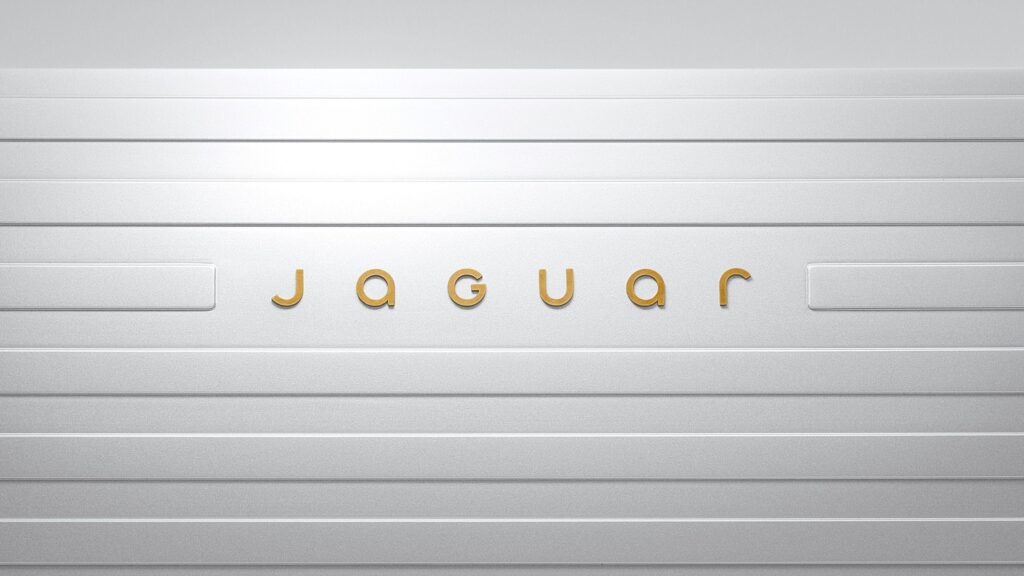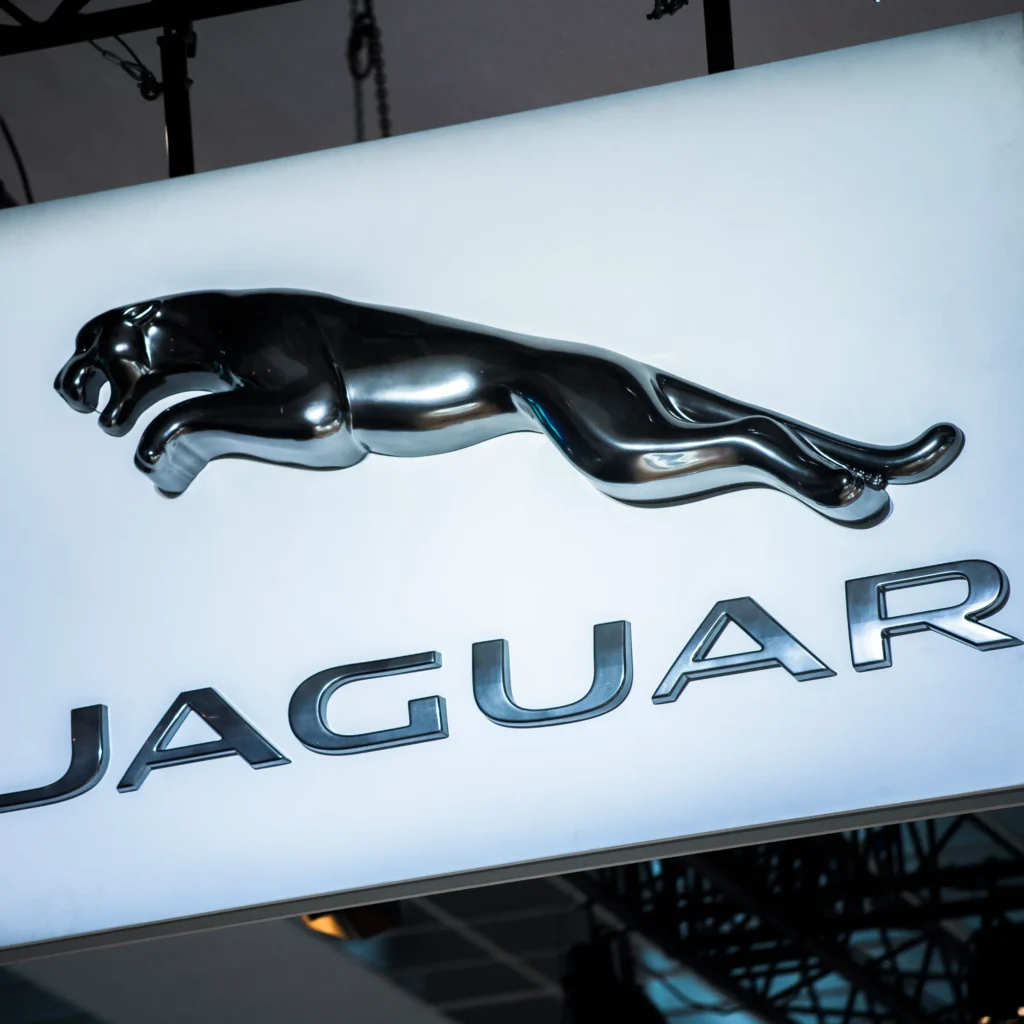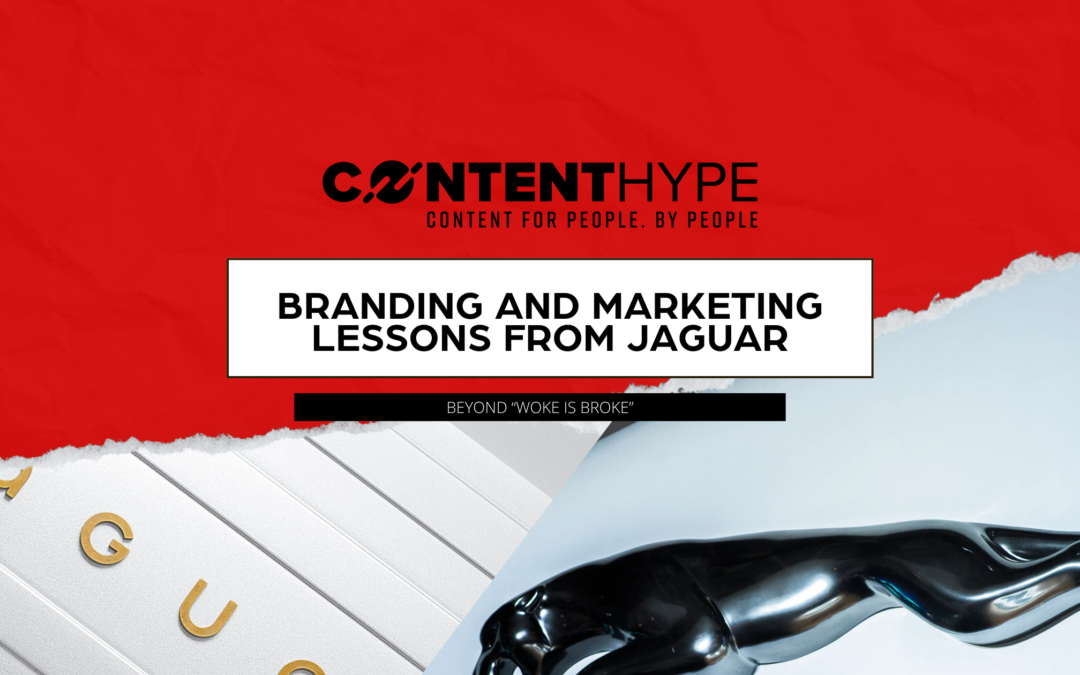Jaguar’s rebrand has been making headlines and not all of them good. As a lifelong Jaguar fan I’ve been watching this with a mix of interest and horror. What could have been a bold move forward has felt like a step back – a perfect case study for anyone in branding, graphic design or content marketing.
In this post I’ll break down where Jaguar went wrong, what we can learn and why the product should always be the hero of your marketing.
The Problem Jaguar Had: Turning Admiration into Action
Jaguar’s rebrand didn’t happen in isolation. For the best part of a decade the brand has faced a tough truth: it’s widely admired but that admiration hasn’t translated into sales. Compared to its sister brands Land Rover and Range Rover, Jaguar has struggled to stay relevant in a crowded market.
As we’ll learn below, despite a strong admiration for the brand and what Jaguar represents (or represented), the product just didn’t match the hype. Dogged by reliability issues and changes in ownership, even those who loved Jags were hesitant to pull the trigger. As someone who drives one myself, finding the right year and model and mileage was a painstaking process and whilst I love the car, it’s easy to see why so many would be put off buying them, no matter their sleek looks and prestige status.
Still, Jaguar had to make changes, both to product and brand, to shake off the worst parts of it’s reputation.
So the question is: how do you change perceptions and turn the brand love that Jaguar maintained – even with people who were wary of the product – into actual purchases? Jaguar clearly decided to go big – to bin what came before and introduce a whole new direction. On the surface this makes sense. If what you’ve been doing isn’t working a big change might seem like the answer.
But was that the right approach?
View this post on Instagram
Why the Product Always Comes First
Great branding gets attention but great products win loyalty. That’s why marketing needs to be rooted in what the product delivers – its features, benefits and the emotional connection it makes with customers. Jaguar has flipped this on its head.
Their rebrand has been so focused on “Exuberant Modernism” it’s almost completely disconnected from the cars themselves. No product. No features. Just marketing. It’s bold I’ll give them that but it’s also reckless. Without showing potential customers why they should care the campaign feels like art for art’s sake.

Takeaways:
- Balance is key: use branding to support your product not overshadow it.
- Context is everything: a campaign without product context will alienate both fans and potential customers.
- Products build trust: great marketing campaigns can create interest but it’s the product that builds long term brand equity.
The Culture Wars: Why Jaguar’s Rebrand Fails for Simpler Reasons
One of the loudest criticisms of Jaguar’s rebrand has been its “wokeness”. Commentators have descended into arguments over inclusivity in advertising and whether Jaguar has gone too PC. Let’s be clear: this is missing the point entirely.
This isn’t about culture wars or left vs right. It’s about a rebrand and campaign that fails for basic reasons rooted in brand strategy and execution not politics. Here’s why the backlash isn’t about ideology but about missed marketing fundamentals:
What went wrong with Jaguar’s rebrand?
1. Alienating Loyalists
Jaguar fans have always loved the brand’s iconic bits – the Leapr, the Growler and that timeless balance of elegance and performance. Yet much of that heritage has been stripped away in the rebrand. While Jaguar has said the Leapr isn’t going away entirely it’s been relegated to a secondary element. For fans like me that’s a tough pill to swallow.
It’s not just about nostalgia; it’s about emotional connection. By removing the symbols that have been Jaguar for decades the rebrand is telling existing customers “We’re not interested in what you love about us”.

2. Marketing the Marketing
The campaign feels like they’re marketing their own creativity rather than the cars themselves. And they embargoed any coverage of their upcoming product reveal until after the rebrand launch. So there’s no product to connect to yet. Weird. Leaving the brand open to criticism from all sides.
3. It doesn’t create positive sentiment towards the brand
Good branding should make people feel something – excitement, loyalty or even aspiration. Instead Jaguar’s campaign has left many feeling disconnected. By focusing on a bold artistic identity without tying it to their products or values the rebrand feels abstract and distant not inspiring or relatable.
4. It creates intrigue without delivering substance
Yes the campaign is intriguing. It’s bold, different and disruptive. But what’s the payoff? With no product to see Jaguar has left both fans and potential new customers hanging. Even if the rebrand generates interest there’s nothing tangible – nothing to buy, nothing to aspire to yet.
Will anyone care by the time there’s a product to buy?
Overall this just feels incomplete.
The product will be revealed soon and for Jaguar’s sake it better be bloody good because Jaguar now has an angry mob ready to tear apart anything that’s not best in class and truly revolutionary.

5. It invites unnecessary criticism
This is the most frustrating bit. Jaguar’s rebrand has opened the brand up to cultural backlash. Whether fair or not it’s given critics the perfect opportunity to turn the campaign into a bigger narrative about corporate virtue signalling. This isn’t a reflection on the people who worked on the campaign or the intention behind it – but perception is everything.
When the conversation moves from the brand to culture wars the campaign’s message is lost. Jaguar now has a tough job to get the narrative back on track and the political undertones of the criticism will colour how the wider public perceives the brand.
Business Lessons: How to get branding right
So what can businesses learn from this? Here are a few key takeaways:
1. Anchor your rebrand in heritage
Even when you’re reinventing yourself give loyal customers something to hold onto. Jaguar could have kept the iconic bits front and centre while introducing the new direction. The Leaper for instance could have been modernised not side lined.
2. Make the product the hero
Your branding should support your product not overshadow it. Showing Jaguar’s upcoming electric cars alongside the rebrand could have generated real excitement and grounded the new identity in something tangible.
3. Build context around change
A rebrand needs storytelling. Instead of wiping their digital slate clean and alienating fans Jaguar could have built a narrative around their journey from legacy to modernity. By giving a clear vision of what’s coming next they could have avoided much of the backlash they’re getting.
What you can learn from Jaguar’s rebrand
Jaguar’s rebrand is a big move and I applaud the intent. But the execution? That’s where it fails. By marketing the marketing and not the product they’ve created confusion not clarity.
For anyone in branding, graphic design or content marketing the lesson is clear: always put the product first. A good rebrand doesn’t just look good – it tells a story, builds on what’s come before and gives customers a reason to care about what’s next.
Need to get your branding sorted—or avoid Jaguar’s mistakes? Content Hype can help. Graphic design, content marketing or full brand reboot we’ll work with you to make it happen.
Get in touch today.


Recent Comments